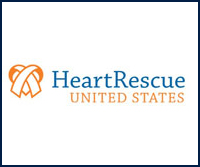Click on the highlighted states
to learn about our current partners
HeartRescue United States
The HeartRescue Project was initiated and funded by Medtronic Philanthropy in 2011. Organizations renowned for resuscitation excellence were assembled from across the country, and charged with implementing programs in their specific regions to improve survival from cardiac arrest.
The goal was to combine the strengths of each organization to create an effective SCA response program that can be tailored and replicated across the United States. HeartRescue United States today consists of founding partners, the original six states, American Medical Response, and many new state partners committed to the Program’s goals.
It is a state-based initiative that seeks to “measure and improve” resuscitation care, as well as build a state registry to help community-based programs improve care for SCA.
HeartRescue Partners have demonstrated that SCA is a treatable event and have made significant advances in their areas of research and expertise to help save more lives.
Key goals:
- improve care and outcomes for out-of-hospital cardiac arrest through the “measure and improve” strategy. This strategy focuses on quality improvement so communities can benchmark performance, learn from best practices and implement evidence-based changes to increase survival rates.
- measure cardiac arrest care through the use of CARES- The Cardiac Arrest Registry to Enhance Survival.
- improve SCA survival rates through use of the Resuscitation Academy model to educate providers and stakeholders on best practices.
HeartRescue United States supports:
- implementation of effective community-based programs balanced with the understanding that each community is different with varying needs
- involvement of a broad, diverse set of communities and systems of care across member states, as opposed to a few, select high-performing systems
- “operationalizing” science through utilization of a range of how-to programs that span the chain of survival


